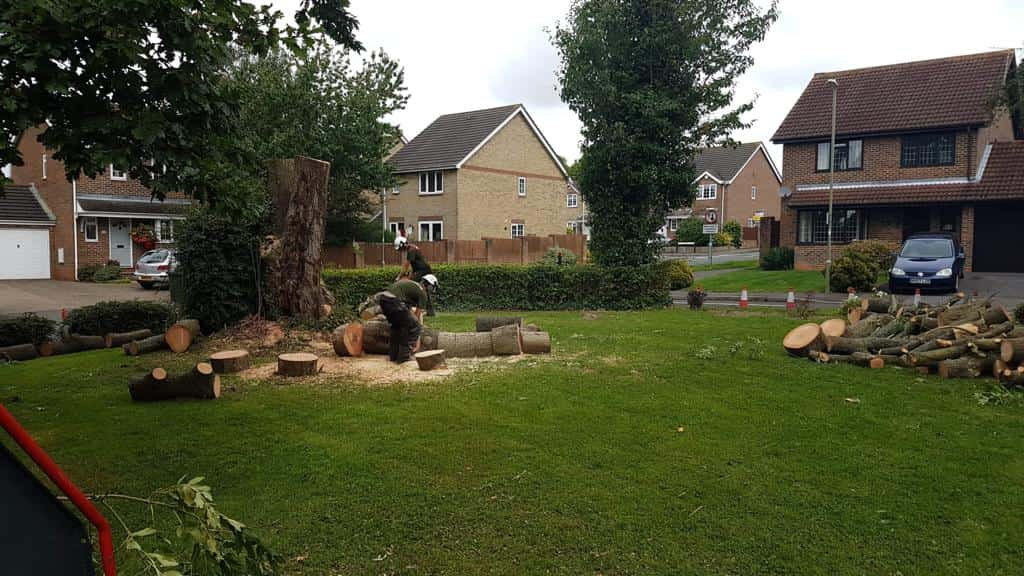Introduction
Dead or dying trees pose serious risks to both people and property. While a tree may appear harmless, weakened branches and unstable trunks can collapse unexpectedly, causing significant damage. Removing these trees promptly is essential for safety, preventing the spread of disease, and maintaining the health of the surrounding environment.
For property owners in Nailsea, Bristol, understanding the importance of tree felling can help prevent accidents and costly repairs. EM Tree Surgery Nailsea provides professional tree removal services, ensuring that dead or hazardous trees are dealt with safely and efficiently.
Key Takeaways
- Dead or dying trees pose a safety hazard due to the risk of falling branches or collapse.
- Diseased trees can spread infections to nearby healthy trees.
- Decaying wood attracts pests such as termites, beetles, and fungi.
- Removing hazardous trees protects property, vehicles, and utility lines.
- EM Tree Surgery Nailsea offers expert tree felling services in Nailsea, Bristol.
The Dangers of Dead or Dying Trees
1. Increased Risk of Falling
Dead trees lose their structural integrity over time. Factors such as strong winds, heavy rain, and storms can cause brittle branches or entire trees to fall. This presents a danger to:
- Homes and buildings, leading to costly damage.
- Pedestrians, drivers, and nearby properties.
- Power lines and underground utilities, which can result in outages or fires.
2. Spread of Disease
Many trees die due to infections caused by fungi, bacteria, or pests. If left untreated, these diseases can spread to nearby trees and plants, causing widespread damage. Common tree diseases in the UK include:
- Ash dieback, which weakens trees and leads to breakage.
- Dutch elm disease, a fungal infection that spreads rapidly among elm trees.
- Honey fungus, which attacks tree roots and can destroy multiple trees in an area.
Early removal of infected trees helps protect the surrounding landscape from further disease outbreaks.
3. Attraction of Pests and Fungi
A decaying tree is a breeding ground for unwanted pests, including:
- Termites and wood-boring beetles, which can spread to homes and wooden structures.
- Rats and other rodents that use hollow trunks for shelter.
- Fungi and mould, which can produce spores that affect air quality.
By felling a dead tree, property owners can prevent pest infestations and related structural damage.
4. Damage to Surrounding Trees and Vegetation
A dying tree competes for resources such as sunlight, water, and soil nutrients, which can hinder the growth of nearby healthy trees. Removing it allows the surrounding vegetation to thrive without obstruction.
When Should a Dead Tree Be Removed?
1. Visible Signs of Decay
If a tree has:
- Large sections of missing bark.
- Cracks or cavities in the trunk.
- Fungal growth, such as mushrooms at the base.
- Brittle branches that snap easily.
It is a clear indication that the tree is no longer structurally sound.
2. Leaning or Unstable Trunk
A tree that is tilting significantly or has exposed roots may be at risk of falling. Immediate removal is recommended to prevent collapse.
3. Lack of Leaves or Dead Branches
A tree that fails to produce leaves during the growing season or has excessive dead branches is likely dying and should be assessed by a professional tree surgeon.
The Benefits of Professional Tree Felling
Attempting to remove a dead tree without the right expertise and equipment can be extremely dangerous. Professional tree surgeons ensure that felling is carried out safely and efficiently.
1. Safe and Controlled Tree Removal
Trained arborists use specialised equipment and techniques to:
- Prevent damage to nearby structures, fences, and gardens.
- Control the direction of tree falls to avoid accidents.
- Handle tree felling in confined spaces without risk.
2. Proper Disposal of Tree Debris
After felling a tree, professionals ensure that logs, branches, and debris are cleared efficiently, leaving the area clean and hazard-free. Wood can also be repurposed for mulch or firewood.
3. Compliance with Local Regulations
In some cases, tree removal requires approval, especially if the tree is protected under a Tree Preservation Order (TPO). Professional tree surgeons:
- Check legal requirements before carrying out work.
- Obtain necessary permits if required.
- Ensure compliance with environmental and safety regulations.
For residents in Nailsea, Bristol, EM Tree Surgery Nailsea provides expert tree felling services, ensuring safe removal and disposal of dead or dying trees.
Conclusion
Dead or dying trees should never be left standing, as they pose serious risks to safety, property, and the surrounding environment. By addressing tree health concerns early, homeowners can prevent accidents, reduce pest infestations, and protect healthy vegetation. Professional tree surgeons ensure safe and efficient tree removal, minimising risks and ensuring compliance with legal requirements.
For expert tree felling services in Nailsea, Bristol, EM Tree Surgery Nailsea offers reliable solutions tailored to your needs. Contact us today to assess and remove hazardous trees from your property.
Call us on: 01275 402 923
Click here to find out more about EM Tree Surgery Nailsea
Click here to complete our contact form and see how we can help with your trees needs.

